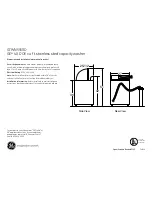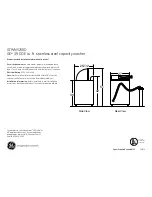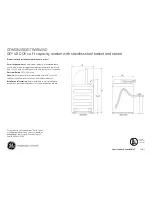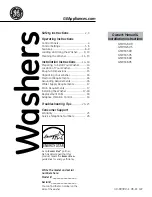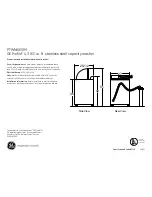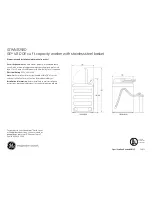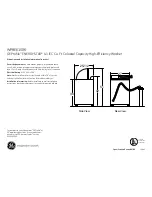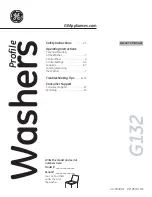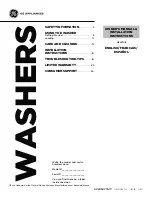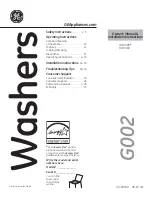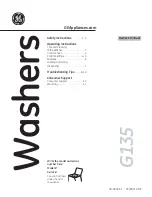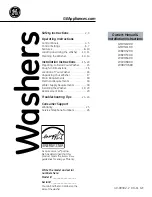
4
ENERGY STAR
B.
DETERGENT
• Detergent is flushed from the dispenser at
the beginning of the cycle. Either powdered
or liquid detergent can be used.
Note:
Liquid detergent will drain into the washer
drum as it is added.
• Add a low-sudsing, high-efficiency
detergent made for front-loading washers
to the dispenser chamber. Look
for this symbol on the detergent
label. Use the cap or scoop
provided bythe detergent manufacturer to measure the amount recommended.
• Color-safe bleach, water conditioner, detergent booster and enzyme products may be added to the detergent compartment.
Avoid mixing liquids and powders.
• Detergent usage may need to be adjusted for water temperature, water hardness, load size and soil level.
• For best results, avoid oversudsing.
C.
LIQUID BLEACH
• If desired, measure out the
recommended amount of liquid chlorine
bleach (not to exceed 1/3 cup (80 mL))
and pour it into the center compartment
labeled "Liquid Bleach" and marked
with this symbol .
• Fill to the mininum fill line (MIN.)for
small loads. Fill to the maximum fill line
(MAX.) for large loads. Do not exceed
the maximum fill line. Overfilling can
cause early dispensing of the bleach
which could result in damaged clothes.
• Do not pour undiluted liquid chlorine bleach directly onto the load or into the drum. Fabric damage can occur.
•
Add powder or liquid color-safe bleach to the detergent dispenser.
D.
FABRIC SOFTENER
• If desired, pour the recommended amount of fabric softener into the compartment labeled "Fabric Softener" and marked with
this symbol .
• Fill to the mininum fill line (MIN.) for small loads. Fill to the maximum fill line (MAX.) for large loads. Do not exceed the maximum
fill line. Overfilling can cause early dispensing of the fabric softener which could result in stained clothes.
•
Do not pour fabric softener directly on the wash load.
• Use of a fabric softener dispensing ball is not recommended in tumble action washers.
6.
Select the cycle, temperature, spin speed, options and features according to type, size, and soil level of each load. Start the
washer.
(See
Operating Instructions
for your specific model.)
7. Remove items when the cycle is completed.
Place washed items in automatic dryer, line dry, or dry flat as directed by fabric care label. Excess
wrinkling, color transfer or odors may develop in items left in the washer after the cycle has
ended.
8. General Precautions
•
If the dispenser drawer is opened during operation, the washer will shut off.
Slowly
close the dispenser drawer, and press START to continue cycle.
•
Do not slam the washer door closed or try to force the door open when DOOR LOCK
light is on
. This could result in damage to the washer.
•
DO NOT leave the washer door open.
An open door could entice children to hang on the
door or crawl inside the washer. Note: If there are no small children present, leave the door
ajar to prevent odor build up and to improve venting of the unit.
• To avoid damaging the washer and personal injury, DO NOT hang on or lean against the
washer door.
• Do not place detergent, bleach or fabric softener containers on top of the washer. They can
damage the finish or controls.
Do not store or place laundry products
on top of washer at any time. They
can damage the finish or controls.
Note:
From time to time you may see
water in the bleach and fabric softener
compartments. This is a result of the
siphoning action and is part of the
normal operation of the washer.
As an ENERGY STAR
Partner, Electrolux Home
Products has determined
that this product meets the
ENERGY STAR guidelines
for energy efficiency.
®
®









